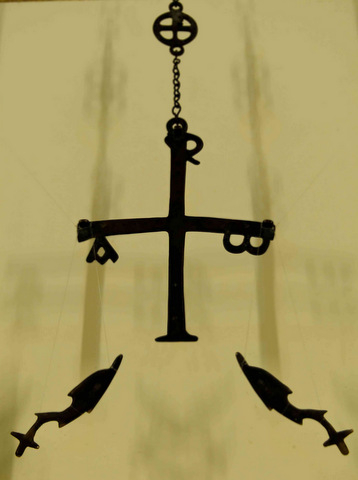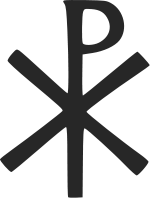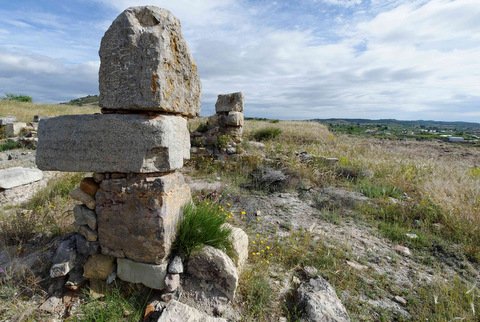- Region
- Águilas
- Alhama de Murcia
- Jumilla
- Lorca
- Los Alcázares
- Mazarrón
- San Javier
-
ALL AREAS & TOWNS
- AREAS
- SOUTH WEST
- MAR MENOR
- MURCIA CITY & CENTRAL
- NORTH & NORTH WEST
- TOWNS
- Abanilla
- Abarán
- Aguilas
- Alamillo
- Alcantarilla
- Aledo
- Alhama de Murcia
- Archena
- Balsicas
- Blanca
- Bolnuevo
- Bullas
- Cañadas del Romero
- Cabo de Palos
- Calasparra
- Camping Bolnuevo
- Campo De Ricote
- Camposol
- Canada De La Lena
- Caravaca de la Cruz
- Cartagena
- Cehegin
- Ceuti
- Cieza
- Condado de Alhama
- Corvera
- Costa Cálida
- Cuevas De Almanzora
- Cuevas de Reyllo
- El Carmoli
- El Mojon
- El Molino (Puerto Lumbreras)
- El Pareton / Cantareros
- El Raso
- El Valle Golf Resort
- Fortuna
- Fuente Alamo
- Hacienda del Alamo Golf Resort
- Hacienda Riquelme Golf Resort
- Isla Plana
- Islas Menores & Mar de Cristal
- Jumilla
- La Azohia
- La Charca
- La Manga Club
- La Manga del Mar Menor
- La Pinilla
- La Puebla
- La Torre
- La Torre Golf Resort
- La Unión
- Las Palas
- Las Ramblas
- Las Ramblas Golf
- Las Torres de Cotillas
- Leiva
- Librilla
- Lo Pagan
- Lo Santiago
- Lorca
- Lorquí
- Los Alcázares
- Los Balcones
- Los Belones
- Los Canovas
- Los Nietos
- Los Perez (Tallante)
- Los Urrutias
- Los Ventorrillos
- Mar De Cristal
- Mar Menor
- Mar Menor Golf Resort
- Mazarrón
- Mazarrón Country Club
- Molina de Segura
- Moratalla
- Mula
- Murcia City
- Murcia Property
- Pareton
- Peraleja Golf Resort
- Perin
- Pilar de la Horadada
- Pinar de Campoverde
- Pinoso
- Playa Honda
- Playa Honda / Playa Paraíso
- Pliego
- Portmán
- Pozo Estrecho
- Puerto de Mazarrón
- Puerto Lumbreras
- Puntas De Calnegre
- Region of Murcia
- Ricote
- Roda Golf Resort
- Roldan
- Roldan and Lo Ferro
- San Javier
- San Pedro del Pinatar
- Santiago de la Ribera
- Sierra Espuña
- Sucina
- Tallante
- Terrazas de la Torre Golf Resort
- Torre Pacheco
- Totana
- What's On Weekly Bulletin
- Yecla


- EDITIONS:
 Spanish News Today
Spanish News Today
 Alicante Today
Alicante Today
 Andalucia Today
Andalucia Today
The Cross of Cehegín
The ancient Cehegín cross nearly ended up in a scrapyard
 The Cross of Cehegín is represented in a sculptural piece on the eastern roundabout as visitors approach the site of the modern town, and curious visitors who have perhaps seen the double cross of nearby Caravaca de la Cruz may wonder about the significance of this particular design.
The Cross of Cehegín is represented in a sculptural piece on the eastern roundabout as visitors approach the site of the modern town, and curious visitors who have perhaps seen the double cross of nearby Caravaca de la Cruz may wonder about the significance of this particular design.
This sculpture represents an ancient piece which can be seen in the town's archaeological museum and which was found on the site of the City of Begastri, a Visigoth city built over the ruins of both Iberian and Roman settlements which existed here long before the first stone of modern Cehegín had been laid.
(The Visigoths arrived in this part of Europe after the decline of the Roman area in the 5th century.)
Close to this roundabout the road crosses the "Vía Verde" greenway, a former railway track which is today a cycling and walking route, and it was when this was being built that Begastri and the symbolic were found beneath centuries of accumulated earth.
The Cross of Cehegín was found at the Cabezo de Roenas de Cehegín, the hill on which Begastri stood. This was a significant Roman community and later became the Episcopal seat of Begastri.
This Roenas hill is near the banks of the Río Quipar, just over 2 kilometres from the centre of modern Cehegín.
The story of the cross
 The survival of this cross today is, in itself, little short of miraculous, as it nearly ended up in a scrapyard. This was avoided by Cristóbal Sánchez de Amoraga, a former mayor of Cehegín, who bought it from the wife of Juan José Guirao Martínez (“El Piños”) at the end of the 1940s.
The survival of this cross today is, in itself, little short of miraculous, as it nearly ended up in a scrapyard. This was avoided by Cristóbal Sánchez de Amoraga, a former mayor of Cehegín, who bought it from the wife of Juan José Guirao Martínez (“El Piños”) at the end of the 1940s.
“El Piños” had found the artefact in around 1932 when he was digging a trench for the construction of the railway near Cabezo de Roenas. He took it home to Matamujeres, near Las Tenzas in the district of Cañada Canara, and his wife was going to sell it to a scrap metal dealer for 8 or 10 pesetas but the Mayor intervened and offered her 50.
At that time he had no idea of its origins, value or historical significance.
The cross is 39.5 cm high and 31.8 cm across, and the monogrammed disc has a diameter of 3.7 cm. Both faces of the disc are decorated with small dots cut into the circle. Similar crosses have been found at Burguillos, Santa Elena de Jaén and the Cortijo de Íscar in Baena, all of them probably dating from the 6th and 7th centuries.
Christianity arrived in the Region of Murcia in the 2nd and 3rd centuries AD, as is borne out by the discoveries made by archaeologists, and during the period of Visigoth dominance, from the 5th to the 7th century, there were various times of crisis due to the fact that the Visigoths were Arianists. This means that they did not accept the divinity of Christ, although they later converted to Catholicism under King Recaredo I (559-601).
The cross is in the Latin style although its inspiration lies in Greek tradition, and it may be of Hispanic origin, even possibly from the Region of Murcia. The likelihood is that it is a Hispano-Roman piece from approximately the 6th century, when Christianity was consolidating its foothold in the area: the technology existed to make it here, and craftsmen of the time were capable of making it.
A replica of the cross hangs above the altar in the church of Santa María Magdalena, just a few metres from the archaeological museum: this was made by a blacksmith in Moratalla, the technique initially used being smelting, with the product later being worked on with files and chisels.
Crosses of this type used to hang from the ceiling above the altar, and were an essential element in the consecration of churches and altars as well as the blessing of cemeteries.
Symbolism of the Cross of Cehegín
The Christian religious practices of this time are reflected in the Visigoth or “mozárabe” liturgy, which had its own distinctive features. The main characteristic which marked these early Christians out was their devotion to symbols.
Dolphins and fish in early Christianity
 One of the most instantly recognisable symbols used by early Christian communities as a badge by which they could identify each other among the hostile pagans was that of a fish. It was first used in this way in the late 4th century.
One of the most instantly recognisable symbols used by early Christian communities as a badge by which they could identify each other among the hostile pagans was that of a fish. It was first used in this way in the late 4th century.
The symbol derives from the Greek word for “fish”, “ichthys”, and is an acrostic, which, put simply is a code, achieved by taking the first letters of each word of a phrase or rhyme to spell out a meaning.
In this case, Greek for JESUS CHRIST, GODS SON, SAVIOUR is ( Ιησούς Χριστός, Θεού Υιός, Σωτήρ; Iesous CHristos, THeou Yios, Soter — ch and th being each one letter in Greek). The initials spell ichthys (ΙΧΘΥΣ).
This cross features two fish or dolphins, the holiest symbol of primitive Christian faith. They represent duality: the waters above and the waters below, the masculine soul and the feminine soul, the holy couple, the eternal divine marriage.
The detail in the dolphins includes the eyes, from which tears are being shed. This represents the key of life, and symbolizes the triumph of life over death; therefore a symbol of reincarnation and immortality.
When they were found there were no chains linking the dolphins to the cross, but they were most probably hanging from it, symbolizing the Christian believers surrounding their Saviour and the line of the Earth as a way out towards the search for God.
The chrismon or circle
 The “chrismon”, or monogram, is in the form of a "Constantinian labarum," and features a circle (a symbol of the Sun) containing the first two letters of the name of Christ in Greek.
The “chrismon”, or monogram, is in the form of a "Constantinian labarum," and features a circle (a symbol of the Sun) containing the first two letters of the name of Christ in Greek.
(The term "Constantinium labarum" referes to the tale of an October evening in 312 AD when the emperor Constantine I was preparing for battle against Maxentius at Milvian Bridge. Afraid of the alleged supernatural powers of his opponent, he prayed to the Roman Gods for help.
He dreamt he saw the sun high in the sky with a symbol in front of it, accompanied by the words "In hoc signo eris" - "by this sign, you will be the victor". Following his vision, he fused the two letters within the circle and placed the symbol on the shields of his soldiers and won great victory, and although he continued to worship Roman Gods for some years more, he later converted to Christianity.
The two letters he entwined were the Greek X (chi) and P (rho), the initial letters of the word Christ (Xristos), and the design has become known as Constantinium labarum.
Other symbols on the cross
 The cross also features the Greek letter “rho” seen as an R at the top and the alpha and omega symbols on the two arms of the cross.
The cross also features the Greek letter “rho” seen as an R at the top and the alpha and omega symbols on the two arms of the cross.
The rho also reinforces the symbol of the sun at the top of the world. The gospels refer to the sun as “the eye of the needle” or “the narrow gate”: the exit from the cosmos, the fruit of the redemption of Christ.
The whole was designed to reinforce the symbolism of Christianity thorugh symbols which had immense familiarity to worshippers.
The original cross is in the Municipal Archaeological Museum of Cehegin in the Plaza de la Constitucion.
(Article based on research carried out by Jose María Alcázar Pastor, a member of the Real Academia Alfonso X El Sabio and the municipal surveyor of Cehegín.)
Cartagena
El Carmoli
Islas Menores and Mar de Cristal
La Manga Club
La Manga del Mar Menor
La Puebla
La Torre Golf Resort
La Union
Los Alcazares
Los Belones
Los Nietos
Los Urrutias
Mar Menor Golf Resort
Pilar de la Horadada
Playa Honda / Playa Paraiso
Portman
Roldan and Lo Ferro
San Javier
San Pedro del Pinatar
Santa Rosalia Lake and Life resort
Terrazas de la Torre Golf Resort
Torre Pacheco
Aledo
Alhama de Murcia
Bolnuevo
Camposol
Condado de Alhama
Fuente Alamo
Hacienda del Alamo Golf Resort
Lorca
Mazarron
Puerto de Mazarron
Puerto Lumbreras
Sierra Espuna
Totana
Abaran
Alcantarilla
Archena
Blanca
Corvera
El Valle Golf Resort
Hacienda Riquelme Golf Resort
Lorqui
Molina de Segura
Mosa Trajectum
Murcia City
Peraleja Golf Resort
Ricote
Sucina
Condado de Alhama
El Valle Golf Resort
Hacienda del Alamo Golf Resort
Hacienda Riquelme Golf Resort
Islas Menores and Mar de Cristal
La Manga Club
La Torre Golf Resort
Mar Menor Golf Resort
Mazarron Country Club
Mosa Trajectum
Peraleja Golf Resort
Santa Rosalia Lake and Life resort
Terrazas de la Torre Golf Resort
La Zenia
Lomas de Cabo Roig

CAMPOSOL TODAY Whats OnCartagena SpainCoronavirusCorvera Airport MurciaMurcia Gota Fria 2019Murcia property news generic threadWeekly Bulletin
